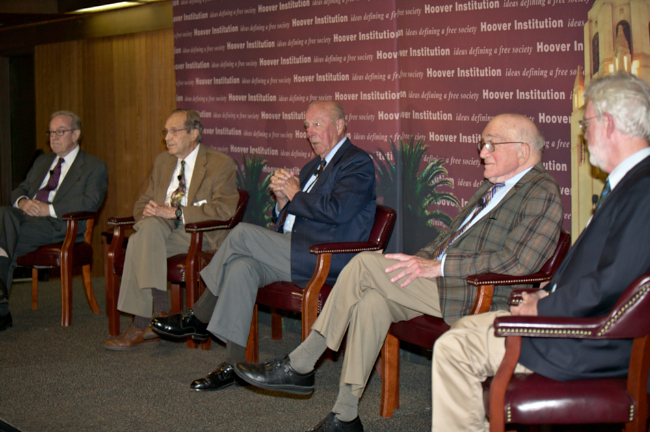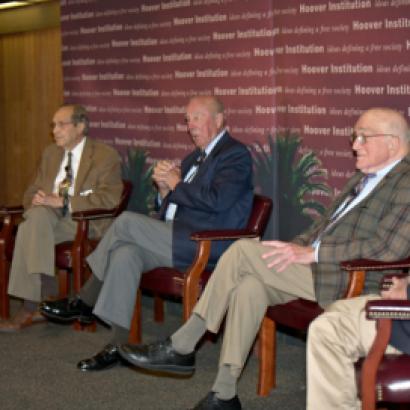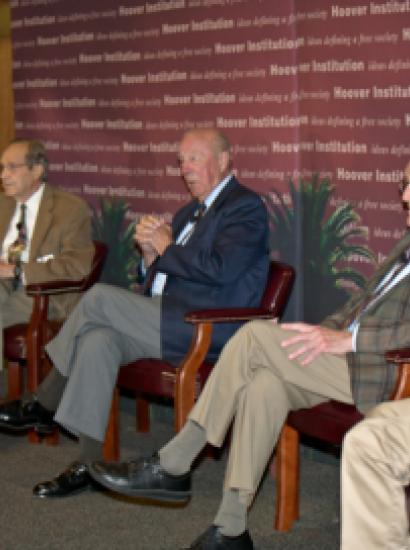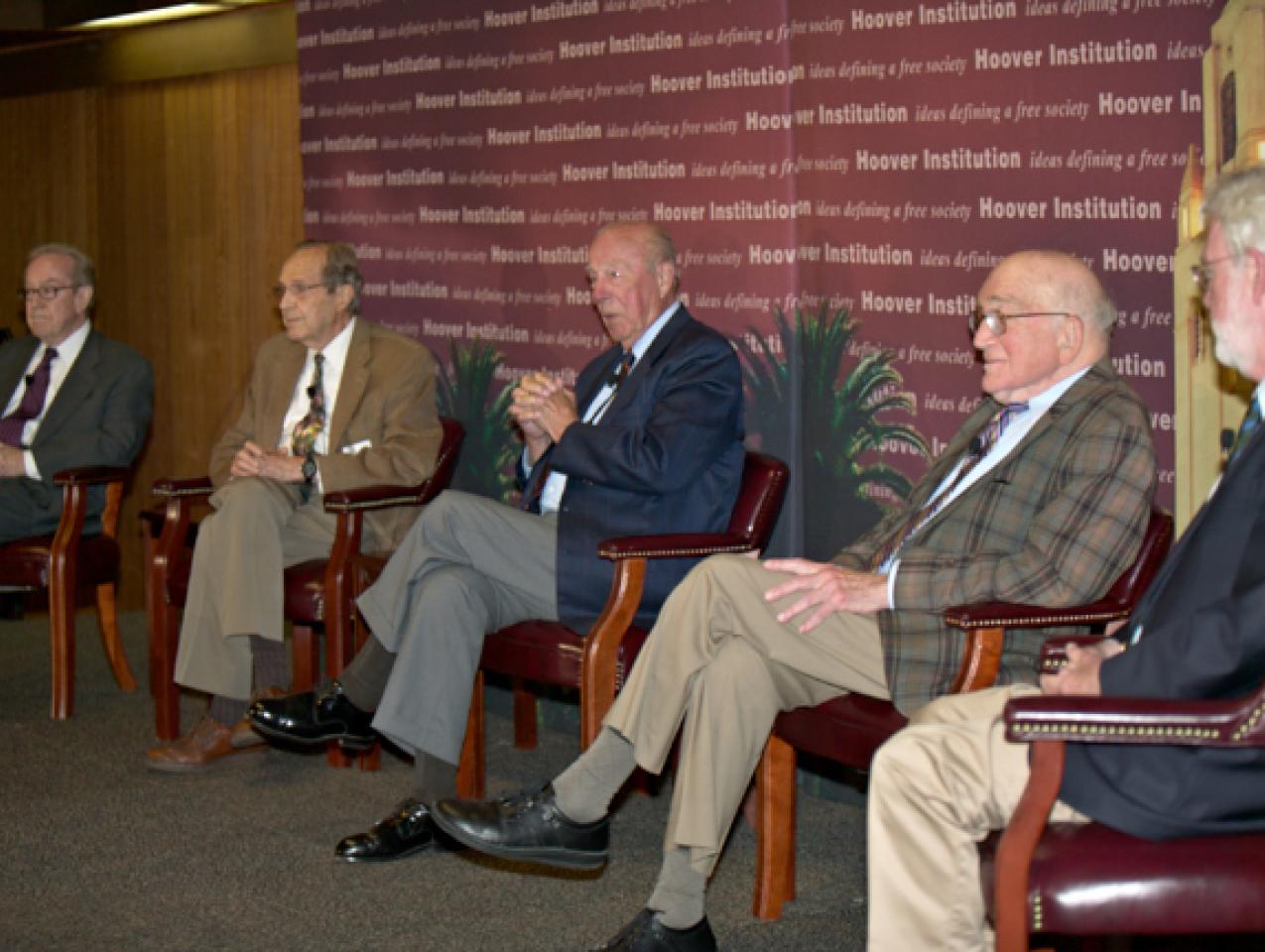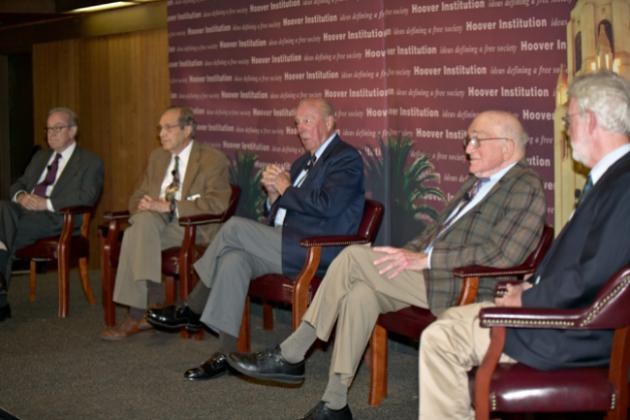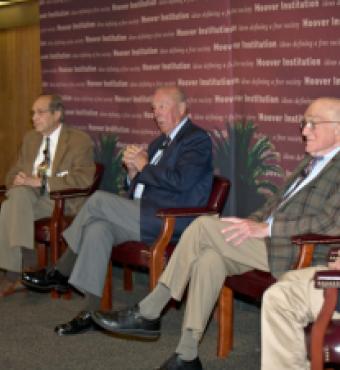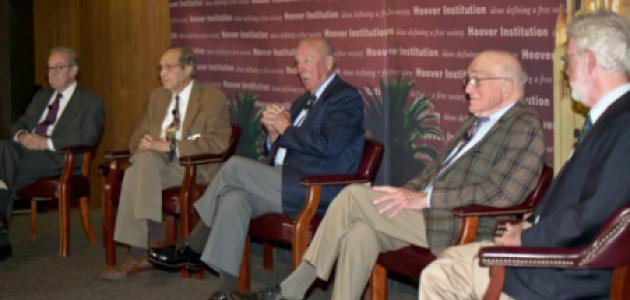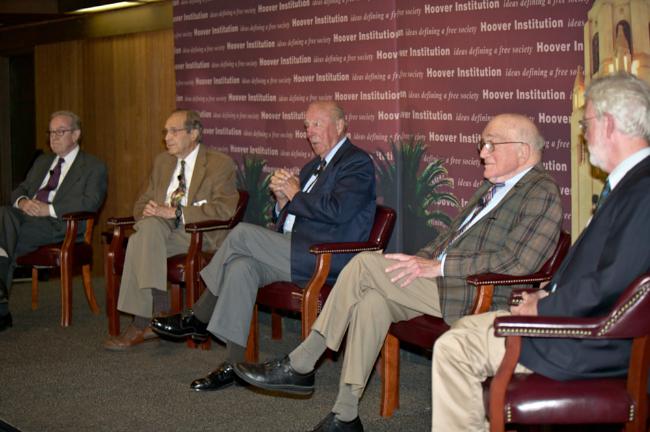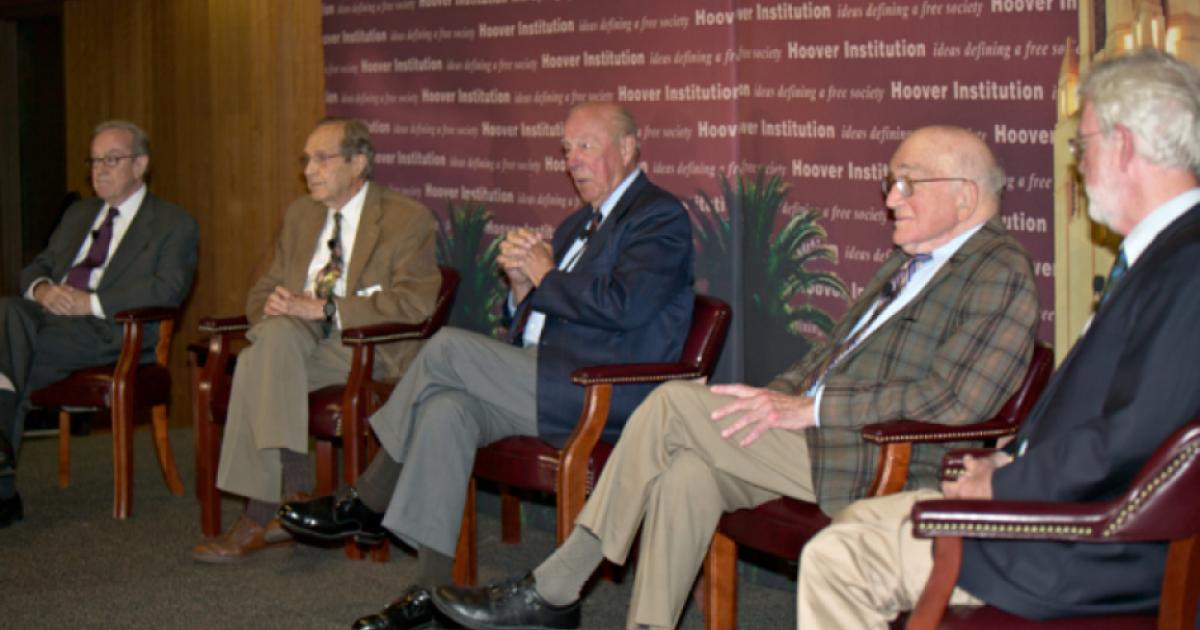George P. Shultz,
William J. Perry, and
Sidney D. Drell talk about the topic of nuclear deterrence in a panel discussion held at the Hoover Institution. “We’ve tried to explore this issue with some care because as you know we have been examining the road toward a world free of nuclear weapons. Deterrence is sort of the doctrinal side of the coin and nuclear weapons on the other side of the coin,” states Shultz. Perry discusses the topic of mutual assured deterrence (MAD). “Deterrence in the past meant negotiate, try to figure out how to resolve your differences without going to war and to be successful it was backed by strength.” (Drell) Emphasizing Perry’s point about MAD, Drell states, “To get anywhere, one’s going to have to build trust, confidence in dealing with people we are living with who have different ideas than we do… and how do we make the conditions possible that we would have a stable world if we got rid of the nuclear weapons.” Click
here to watch the Shultz, Perry, Drell video.
James Goodby discusses how the publications about deterrence can be applied to the present and the future. David Holloway talks about deterrence and enforcements in a world free of nuclear weapons. “The first thing to say is we would be in a postnuclear, not a prenuclear world. Secondly, Jonathan Schell in the early 1980s came up with the idea of virtual deterrence. You could get rid of all the nuclear weapons, but the possibility of reconstitution would constitute, in itself, a form of deterrence,” states Holloway. He reinforces the points made by Shultz, Perry, and Goodby. Click here to watch the Goodby and Holloway video.
